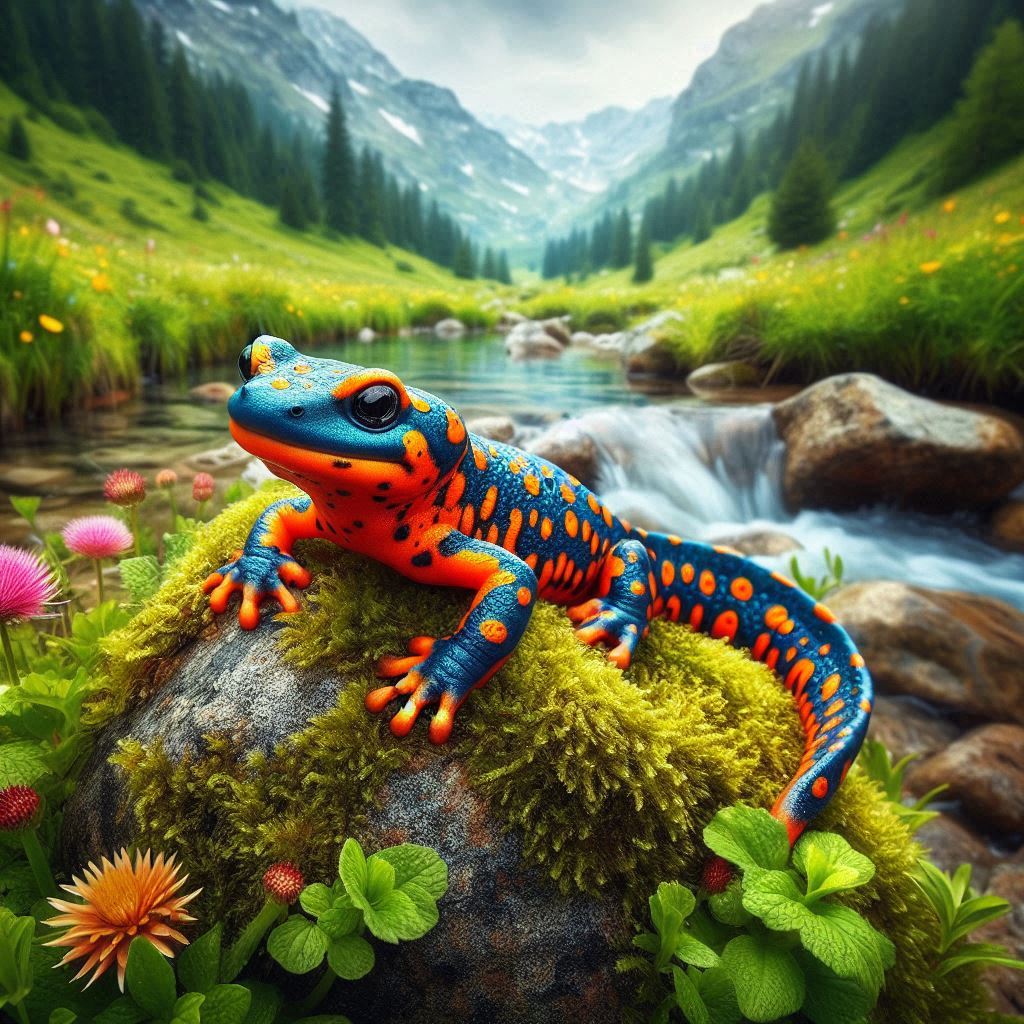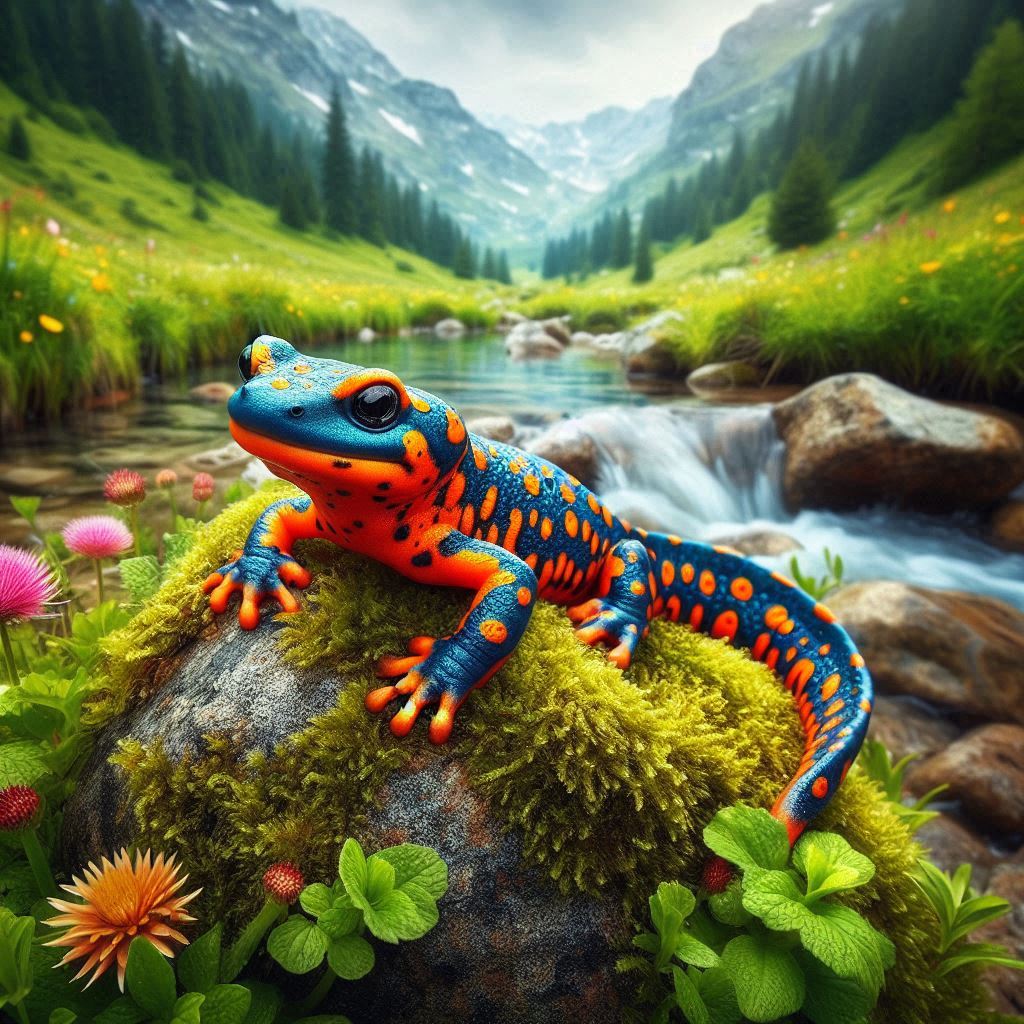🦎 Alpine Newt – General Overview
The Alpine Newt (Ichthyosaura alpestris) is a small amphibian native to Central and Southern Europe. It is known for its striking blue coloring in males during the breeding season and its ability to adapt to both aquatic and terrestrial environments. Like other newts, it undergoes metamorphosis and has a complex life cycle involving both water and land.

📊 Classification
- Kingdom: Animalia
- Phylum: Chordata
- Class: Amphibia
- Order: Urodela (salamanders and newts)
- Family: Salamandridae
- Genus: Ichthyosaura
- Species: Ichthyosaura alpestris
🧬 Physical Characteristics
- Size: 7–12 cm (2.8–4.7 in) in length
- Color:
- Breeding males: Vivid blue flanks, orange belly with dark spots, and a low, wavy crest
- Females and non-breeding males: Brownish-gray with a bright orange underside
- Skin: Smooth and moist on land; slippery and slightly rougher in water
- Tail: Laterally flattened, aiding in swimming

🌍 Habitat
- Native to Central and Southern Europe: Alps, Carpathians, Dinaric Alps, and surrounding lowlands
- Lives in forests, grasslands, and meadows near water sources
- Breeding occurs in ponds, lakes, ditches, and slow streams
- Outside of breeding season, prefers moist terrestrial environments such as under logs or leaf litter
🍴 Diet
- Carnivorous
- Diet includes:
- Insects and insect larvae
- Worms
- Crustaceans
- Small aquatic invertebrates
- Tadpoles and fish eggs (occasionally)
- Captures prey with quick tongue flicks or underwater lunges
🧠 Behavior
- Nocturnal and shy on land; more active and visible during breeding in water
- Undergo seasonal migration to water bodies for reproduction
- Can remain underwater for long periods but needs air to breathe
- During cold months, enters hibernation in frost-free shelters like tree roots or underground burrows
🐣 Reproduction
- Breeding season: Spring (March–June, depending on altitude)
- Males perform an elaborate courtship dance to attract females
- Internal fertilization: Male deposits a spermatophore that the female picks up
- Eggs: Laid singly and wrapped in aquatic plant leaves (up to 250–400 eggs)
- Larvae: Hatch in 2–4 weeks; develop external gills
- Metamorphosis: Takes ~3 months to develop into terrestrial juveniles (efts)
📉 Conservation Status
- IUCN Red List: Least Concern
- Threats:
- Habitat loss and degradation (draining wetlands, pollution)
- Fish introduction to breeding ponds (predation on larvae)
- Disease (e.g., chytrid fungus)
- Protected under EU Habitats Directive and national laws in many countries
- Often bred in captivity for education and conservation
🌟 Fun Facts
- Alpine newts can regenerate limbs, eyes, and parts of the heart and spinal cord
- Males become most colorful only during the breeding season
- Some populations are being reintroduced to areas where they’ve declined
- Known to return to the same pond each year for breeding
- Can absorb oxygen through their skin, especially in water
- Sometimes found in garden ponds in parts of Europe